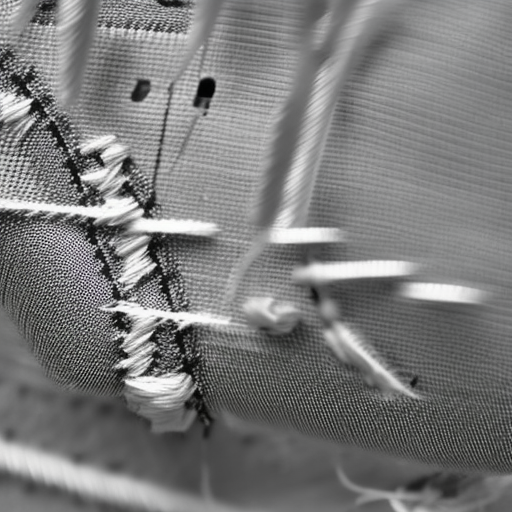Sewing machine stitches not catching can be quite frustrating, especially when you’re in the middle of a project or working on something important. It can disrupt your workflow and hinder your progress. However, there are several reasons why this issue might occur, and understanding them can help you troubleshoot and resolve the problem.
1. Incorrect Needle Position
One common reason for stitches not catching is an incorrect needle position. Ensure that the needle is properly inserted and tightened. A loose or misaligned needle may not adequately engage with the bobbin thread, resulting in missed stitches. Make sure to refer to your sewing machine‘s user manual for proper needle insertion instructions, as it may vary depending on the model.

2. Incorrect Bobbin Placement
Another factor to consider is the correct placement of the bobbin. Double-check that the bobbin is properly seated in its case and that the thread is correctly threaded through the bobbin’s tension spring and guide. If the bobbin is not properly placed or threaded, the upper thread may not catch it, resulting in skipped or loose stitches.

3. Tension Issues
Incorrect tension settings can also lead to stitches not catching. Improper tension distribution between the upper and lower threads can cause the stitches to either be too loose or too tight, resulting in skipped stitches. Check your sewing machine’s manual for guidelines on proper tension settings, and make adjustments accordingly.
4. Dull or Damaged Needle
A dull or damaged needle can also prevent stitches from catching properly. Needles should be replaced regularly, as they can become blunt over time, resulting in poor stitch formation. Additionally, using the wrong needle for the fabric type can cause stitching issues. Ensure that you are using the appropriate needle for your project to avoid any complications.
5. Jammed or Dirty Machine
A sewing machine that is jammed or dirty may have difficulties forming proper stitches. Remove any visible buildup of lint or thread from the bobbin area, feed dogs, and needle plate. Oil your machine regularly as per the manufacturer’s instructions to keep it in good working condition. Routine cleaning and maintenance can significantly reduce the risk of stitch problems.

Conclusion
Troubleshooting sewing machine stitch issues is essential to ensure smooth and efficient sewing. By checking the needle position, bobbin placement, tension settings, needle condition, and machine cleanliness, you can overcome the frustration of stitches not catching. Remember to consult your sewing machine’s manual for specific instructions and always take necessary safety precautions when working with a sewing machine.




